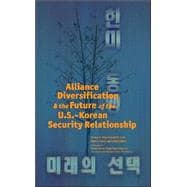
| Illustrations | vi | ||||
| Foreword | vii | ||||
| Preface | xii | ||||
| Chapter One The Shifting Landscape in a New Century | 1 | (17) | |||
|
4 | (3) | |||
|
7 | (11) | |||
| Chapter Two U.S.-ROK Relations in an Era of Transition and Transformation | 18 | (18) | |||
|
20 | (3) | |||
|
23 | (2) | |||
|
25 | (4) | |||
|
29 | (1) | |||
|
30 | (6) | |||
| Chapter Three A Decade of Analysis | 36 | (16) | |||
|
37 | (2) | |||
|
39 | (3) | |||
|
42 | (5) | |||
|
47 | (5) | |||
| Chapter Four America's Ideal U.S.-ROK Alliance | 52 | (23) | |||
|
53 | (6) | |||
|
53 | (1) | |||
|
54 | (3) | |||
|
57 | (2) | |||
|
59 | (16) | |||
|
63 | (2) | |||
|
65 | (2) | |||
|
67 | (8) | |||
| Chapter Five Competing Priorities and Complicating Factors in the United States | 75 | (30) | |||
|
76 | (16) | |||
|
76 | (5) | |||
|
81 | (4) | |||
|
85 | (3) | |||
|
88 | (4) | |||
|
92 | (3) | |||
|
95 | (10) | |||
|
95 | (2) | |||
|
97 | (3) | |||
|
100 | (5) | |||
| Chapter Six Possible ROK Complications and Incentives for Alliance Diversification | 105 | (22) | |||
|
106 | (5) | |||
|
111 | (3) | |||
|
114 | (6) | |||
|
120 | (7) | |||
| Chapter Seven Perspectives from Around the Region | 127 | (30) | |||
|
128 | (5) | |||
|
133 | (3) | |||
|
136 | (5) | |||
|
141 | (2) | |||
|
143 | (4) | |||
|
147 | (1) | |||
|
148 | (4) | |||
|
152 | (5) | |||
| Chapter Eight Options for a U.S. Military Transition on the Peninsula | 157 | (39) | |||
|
158 | (7) | |||
|
165 | (5) | |||
|
170 | (26) | |||
|
172 | (4) | |||
|
176 | (7) | |||
|
183 | (5) | |||
|
188 | (8) | |||
| Chapter Nine Conclusions and Recommendations | 196 | (21) | |||
|
199 | (4) | |||
|
203 | (6) | |||
|
209 | (2) | |||
|
211 | (3) | |||
|
214 | (3) | |||
| Abbreviations and Acronyms | 217 | (2) | |||
| About the Authors and the Institute for Foreign Policy Analysis | 219 | ||||
| Mutual Defense Treaty between the Republic of Korea & the United States of America | A1 |
The New copy of this book will include any supplemental materials advertised. Please check the title of the book to determine if it should include any access cards, study guides, lab manuals, CDs, etc.
The Used, Rental and eBook copies of this book are not guaranteed to include any supplemental materials. Typically, only the book itself is included. This is true even if the title states it includes any access cards, study guides, lab manuals, CDs, etc.